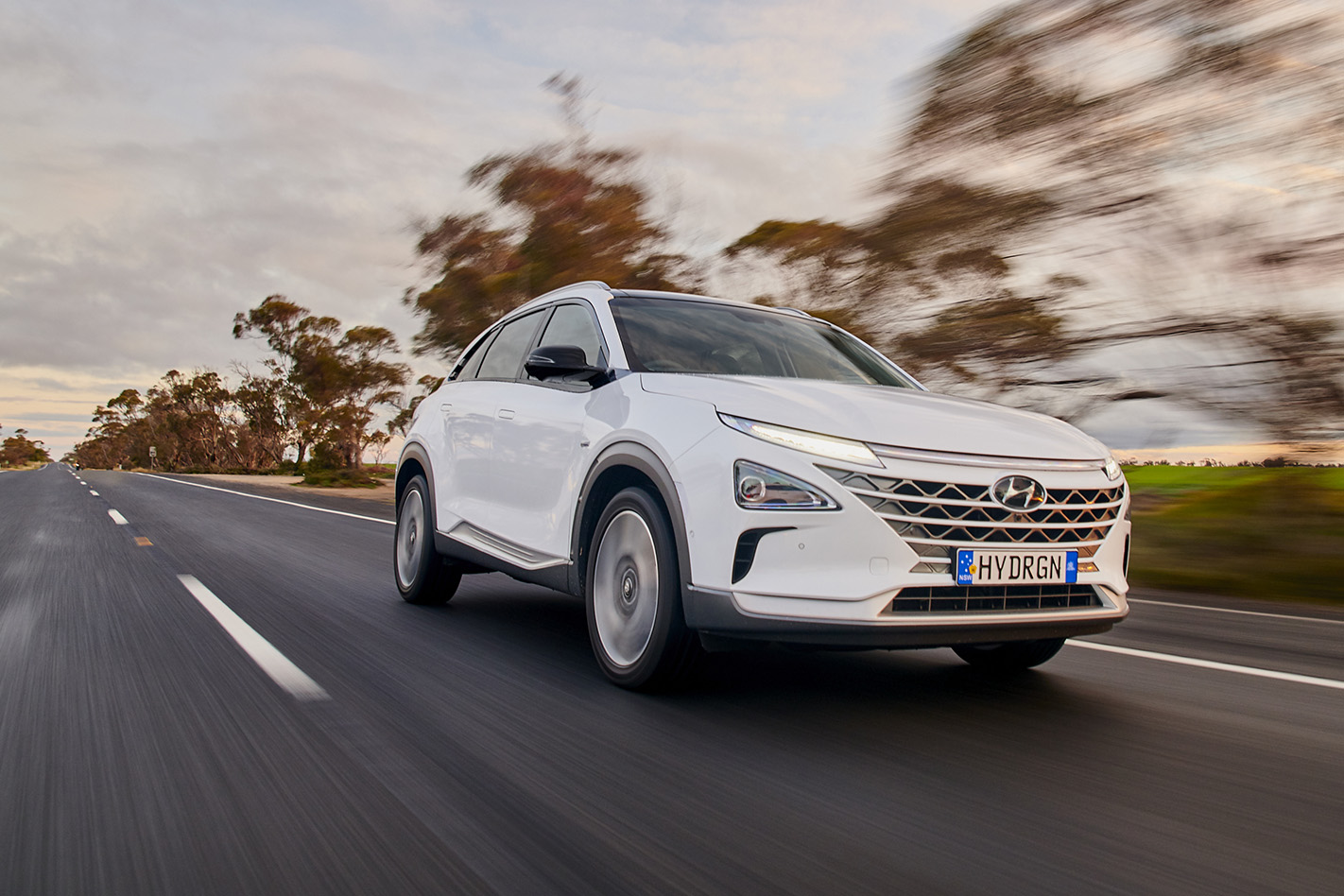What is the Hyundai Nexo?
The Nexo fuel cell electric vehicle (FCEV) is the first hydrogen vehicle to be certified in Australia for sale to the general public.
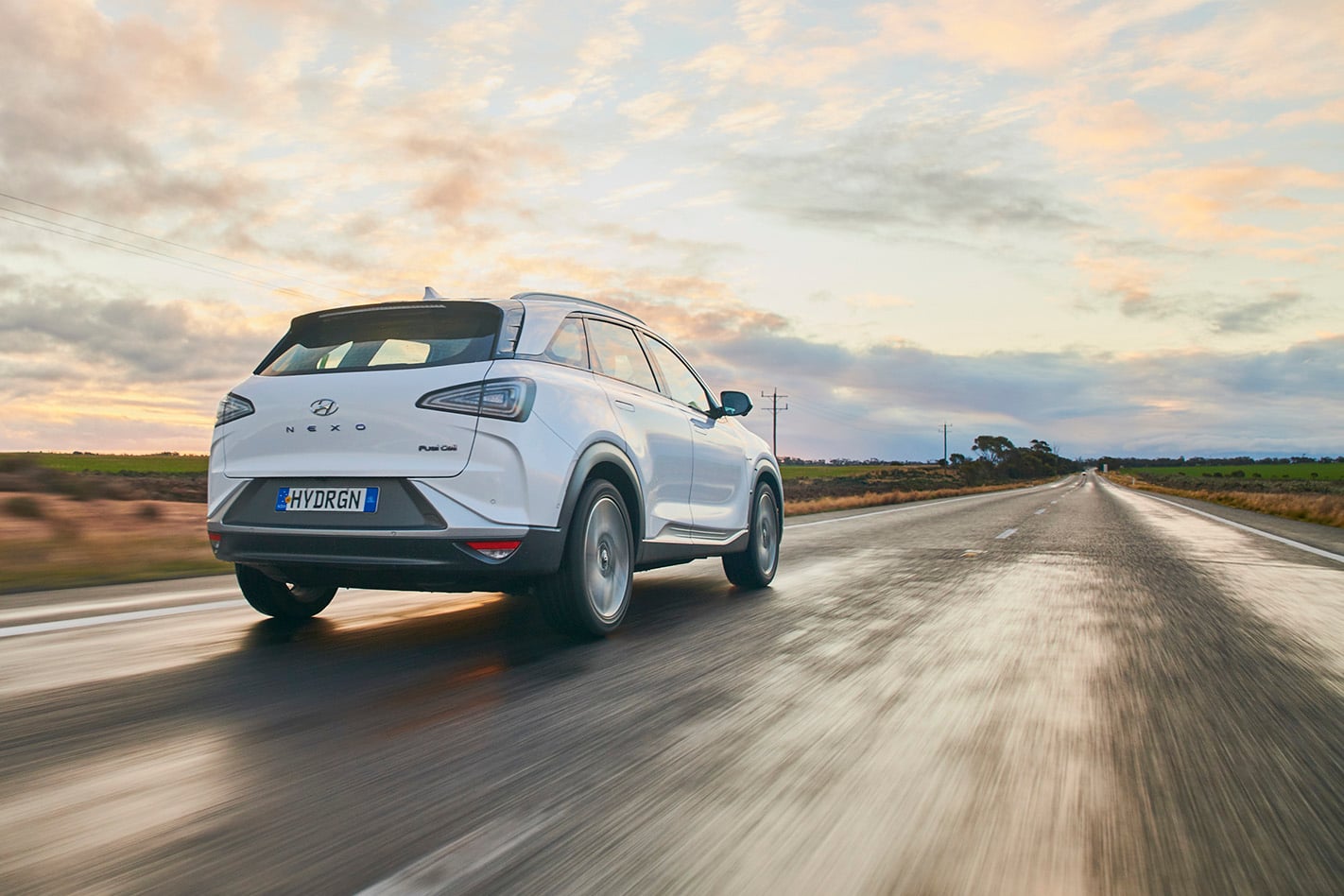
About the size of the new Hyundai Tucson, it is driven by a 120kW/395Nm electric motor that is powered by electricity created by combining air and hydrogen (the latter stored in three high-pressure fuel tanks built into the rear end) in a 95kW fuel cell located under the bonnet.
The fuel cell also provides electricity to a 1.56kW lithium-ion polymer battery, which, like a mild hybrid system, provides a power boost when taking off from a standing start, while also running the Nexo’s 12-volt electrical system.
When filled with compressed hydrogen, created with renewable energy, the Nexo can claim 100 per cent emissions-free driving, with the only byproducts from the fuel-cell process being pure water and purified air.
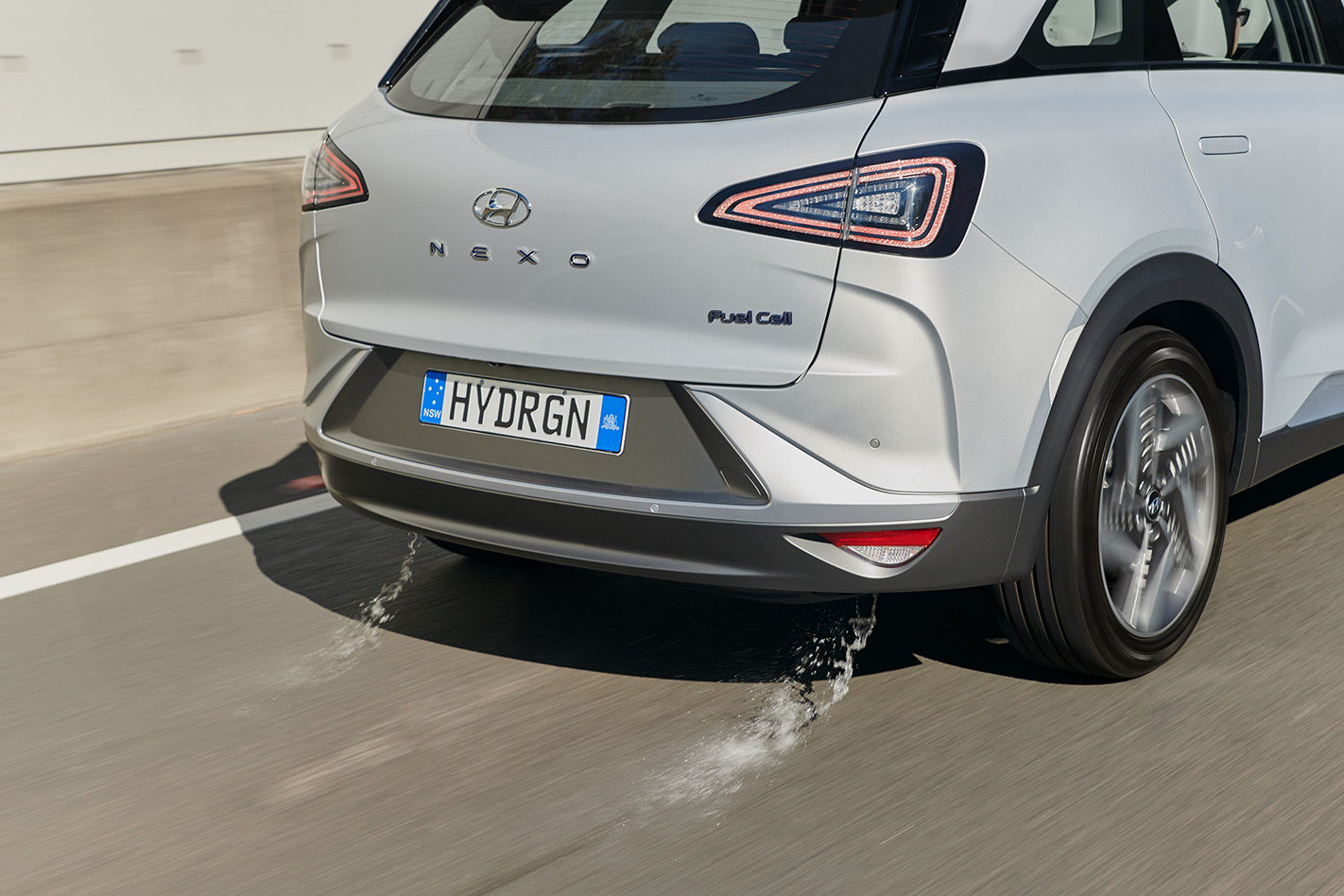
What is the Hyundai Nexo like to live with?
While the Nexo is certified for sale in Australia you can’t actually buy one. If you want to be an early adopter of hydrogen you can lease one through Hyundai’s all-inclusive loan programme, which covers service and maintenance and will also wear the depreciation, meaning there are few running costs.
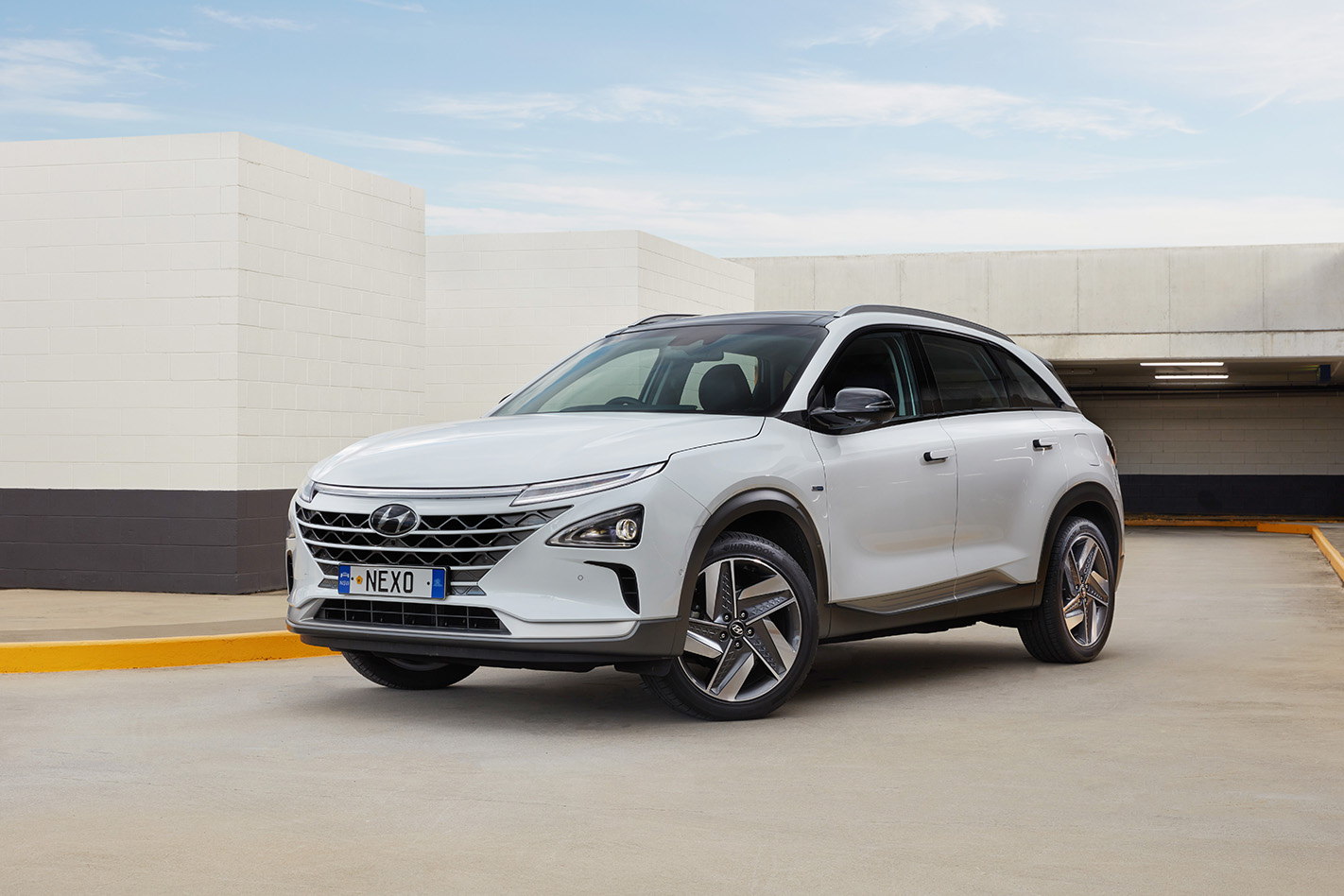
As for specific leasing costs, Hyundai is a little coy about that because of the various factors involved in the all-inclusive deal – but we were told to think of it as being equivalent to leasing a large premium-spec SUV.
Of course, there is an even bigger catch to owning a Nexo and that’s the lack of hydrogen refuelling stations in Australia – at the moment there are only a few public stations that are open or under construction in Canberra, Melbourne, Sydney and Brisbane.
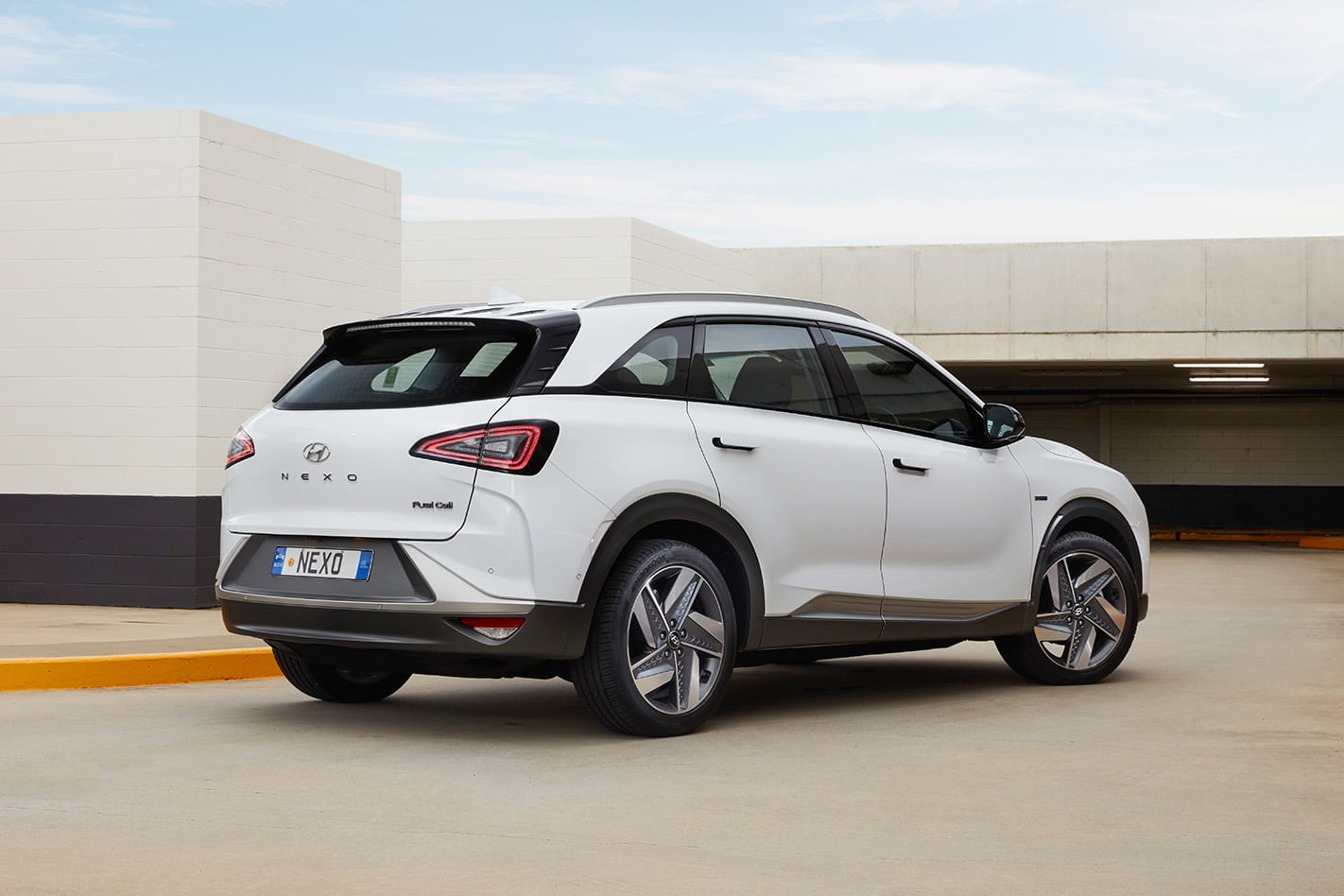
With a 666km WLTP range this obviously limits where you can travel across our big brown land but for somewhere like the ACT, which just became the first city in Australia to open a public hydrogen refuelling station, it’s a very handy way to enjoy emissions-free driving.
Not only is the range significantly longer than most battery-electric vehicles on the market, refuelling only takes about five minutes and isn’t too different to filling a car up with petrol or diesel – it’s actually a little easier as the nozzle locks into the car’s fuel port which means you don’t have to hold on to it.
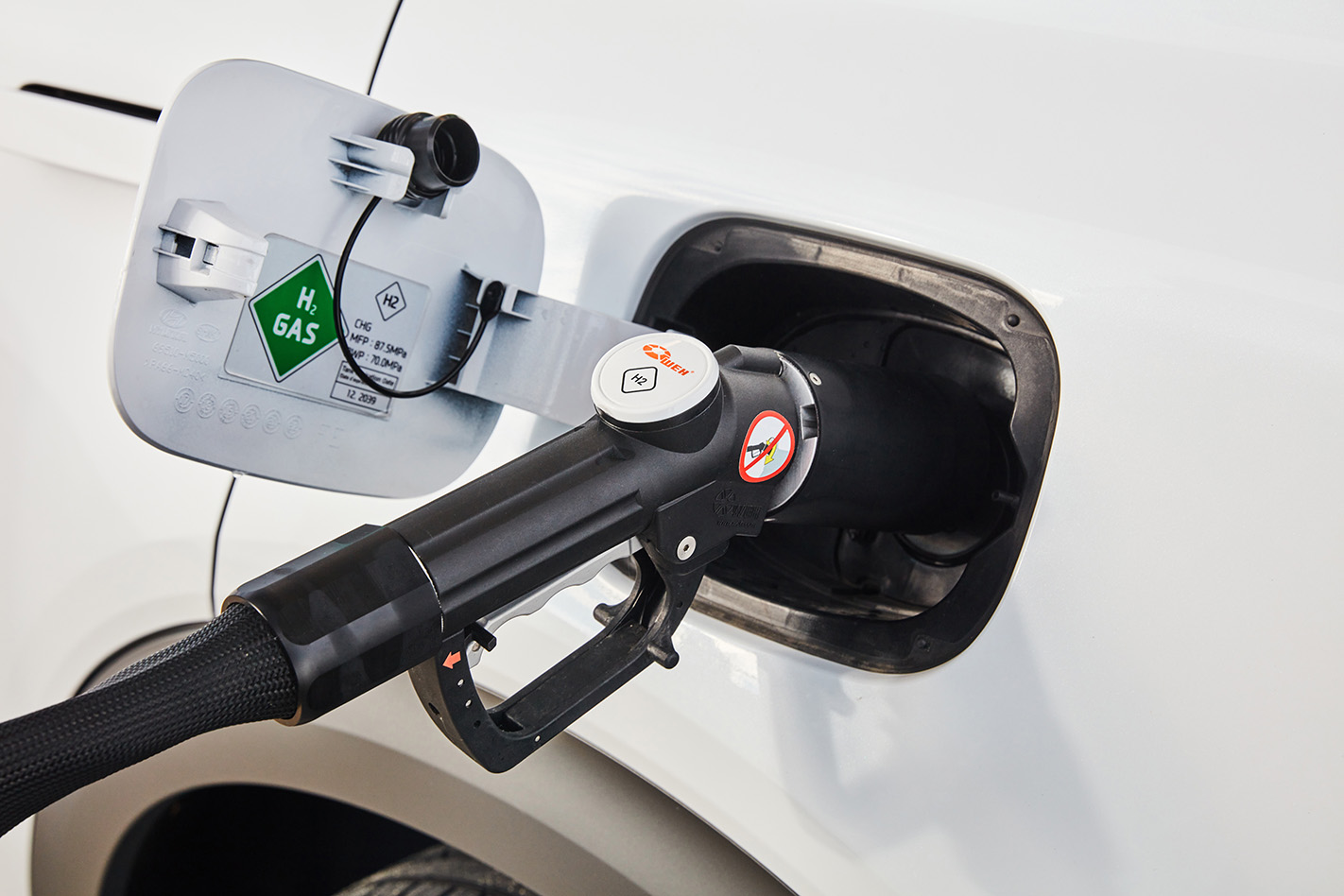
Instead of litres, compressed hydrogen is measured in kilograms and the Nexo’s three tanks take up to 6.3kg combined. According to its official fuel consumption rating, the Nexo consumes 0.95kg per 100km, which wasn’t far below the 1.1kg/100km I averaged in my relatively short time driving it around Canberra and surrounding countryside.
At the moment the retail price of hydrogen fuel is about $13 per kilogram, which makes the cost of filling this about the same as a comparable diesel SUV – though hydrogen at the Canberra refuelling station, primarily built to fuel the ACT Government’s own fleet of 20 Nexos, will be free for the first year.
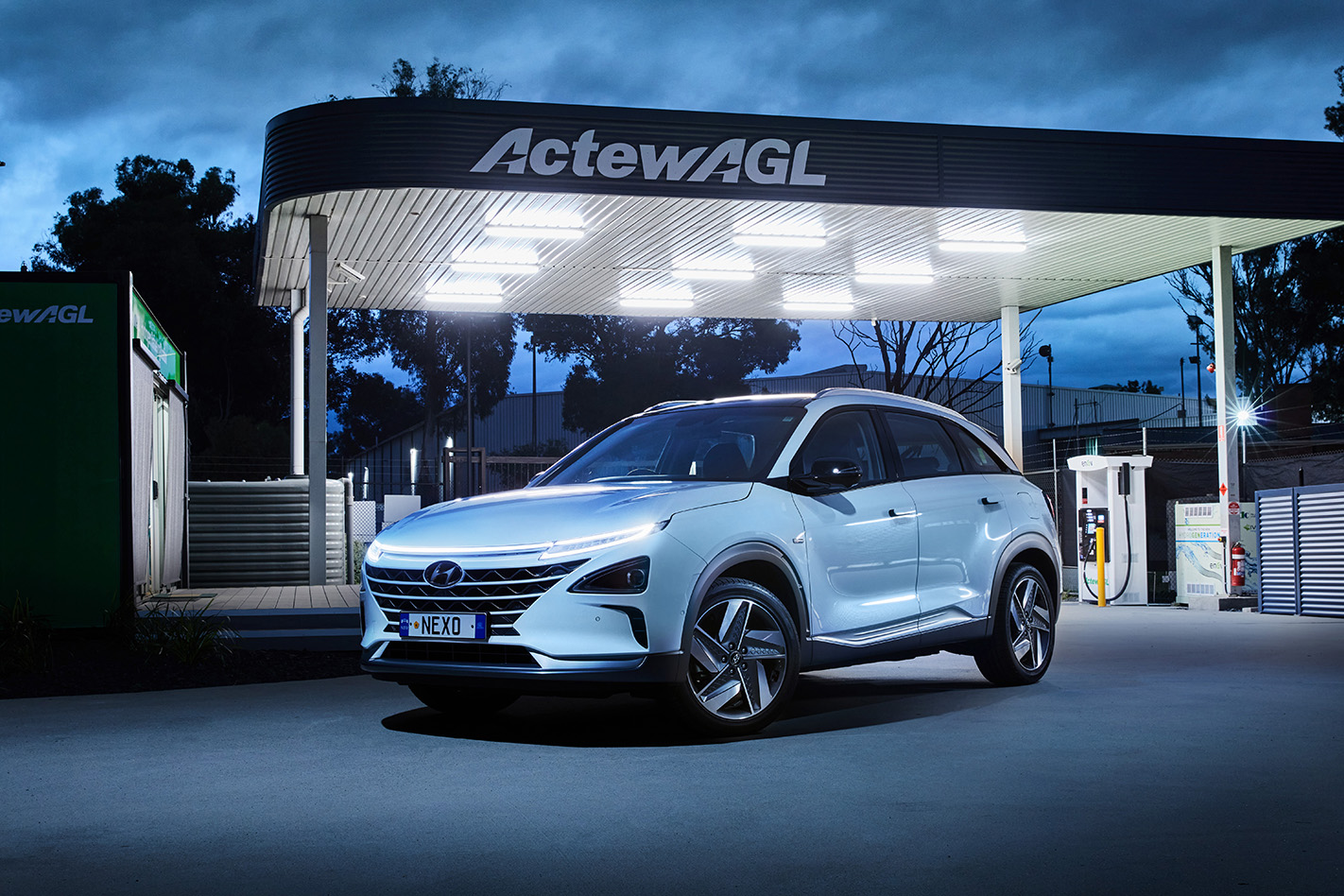
So what does an FCEV early-adaptor get when they sign on the dotted line to take delivery of a Nexo medium SUV?
Quite a lot: the Nexo is available in a single premium-spec variant that’s similarly equipped to the range-topping Highlander trim in its other SUVs such as the Santa Fe and Palisade.
A key difference is that its interior trim is mostly produced from bioplastics, 34kg of which are applied in the form of the interior surfaces, carpet, headliner, door trims, seats and console.

According to Hyundai, the use of biomaterials contributes to a 12kg reduction in CO2 footprint per vehicle during manufacture.
The surfaces look and feel good, so much so you’d think you’re in a luxury German SUV – I particularly like the feel of the headliner and the fabric-like side trim that complements the leather seat upholstery.
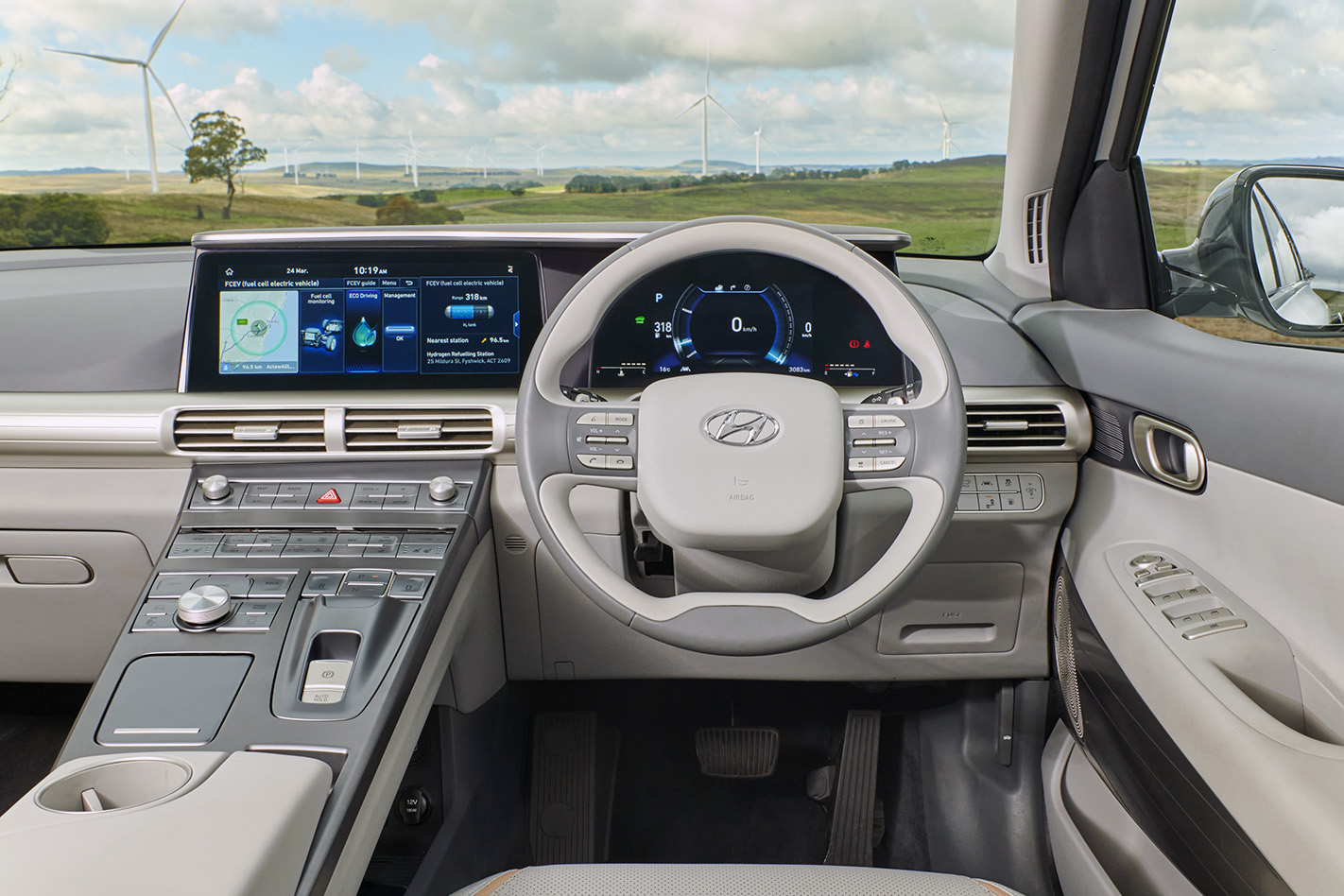
There are two interior colour options, two-tone Stone Grey and Dark Blue. I much prefer the pictured Stone Grey over the blue, which looks like a throwback from the 1990s.
Interestingly the Stone Grey is only available with two of the four available exterior colours, White Cream Mica and Dusk Blue Metallic, while the Dark Blue trim comes with Cocoon Silver and Copper Metallic.
The Nexo’s standard features list includes a 7.0-inch digital driver display and panoramic 12.3-inch infotainment screen that runs in-built satellite navigation and synced content via Android Auto or Apple CarPlay.
The screen also tracks and displays eco-driving performance and will direct you to hydrogen refuelling stations via sat-nav, allowing route planning and range calculation as you drive.
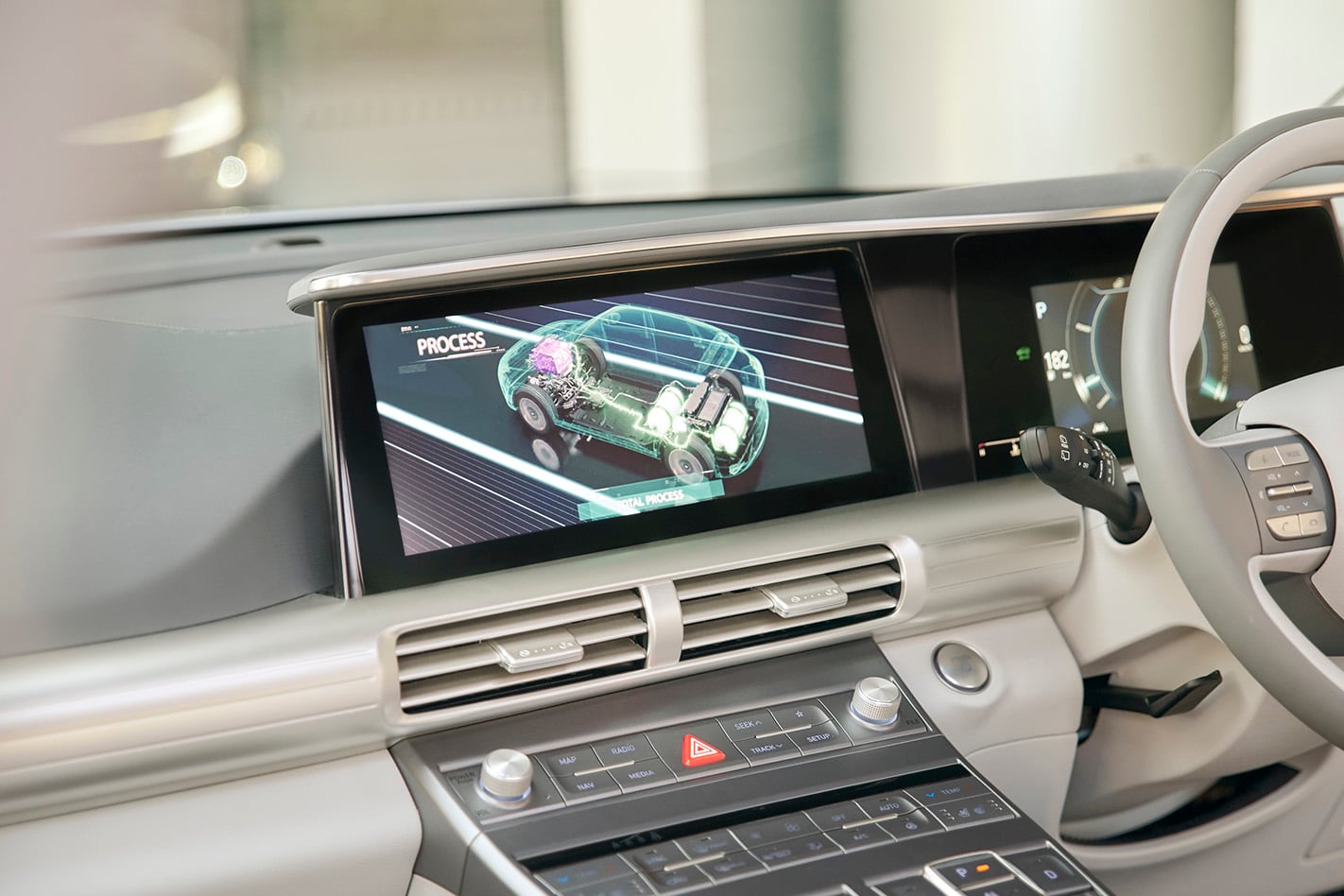
Other interior features include leather-appointed upholstery, power-adjustable front seats that are heated and ventilated, heated rear outboard seats and a heated steering wheel, a sunroof, wireless smartphone charger and Hyundai’s ‘SmartSense’ active safety suite.
The Nexo’s plush front seats are a nice place to be. The driver’s seat has 10-way power adjustment and the passenger eight. They’re separated by a chunky ‘bridge’ style centre console that spans the dashboard and storage tub above a tray where you can store other items including your phone that can be charged wirelessly or through a USB port.
The top of the console is a mass of physical buttons to control everything from media, air-conditioning and seat heating/ventilation as well as housing the push-button gear shifter and driving mode selector.
I’m not really sure how I feel about this – on one hand, it looks impressive and all the buttons are close to hand. But it looks a bit too busy for my liking. I normally prefer physical buttons and switches to on-screen controls, although Hyundai manages to balance the two well in the Palisade, in which the big centre console looks far less cluttered.
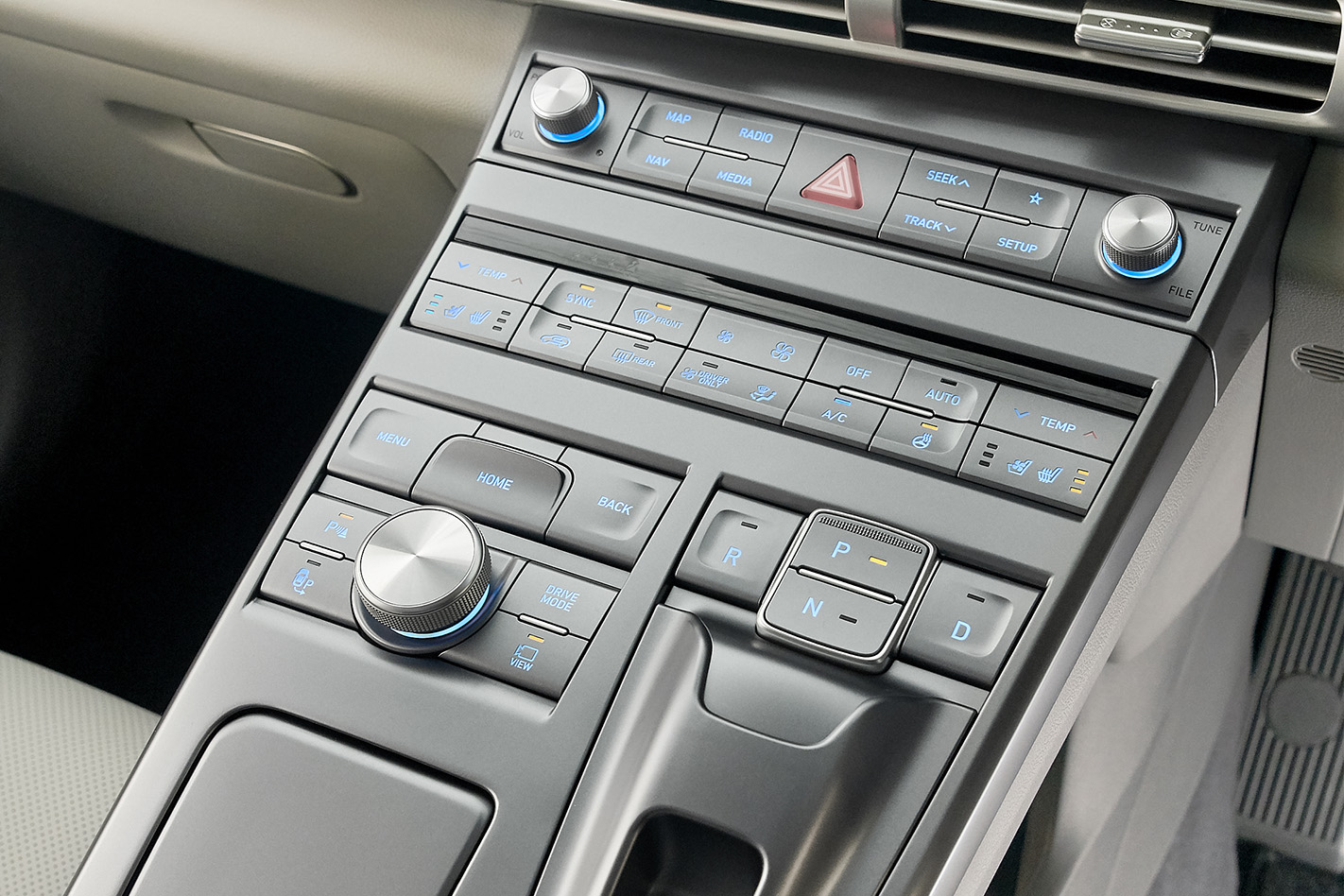
Such is the dominance of controls on the centre console that there is only space for one cup holder for the driver, though for the front passenger a nifty one pops out of the dashboard near the glovebox.
The rear seats are also very comfortable and offer a heap of leg and knee-room and plenty of space under the front seats for your feet. The middle seat would be tight for a third adult, but there’s only a shallow bump instead of the transmission tunnel for more legroom.
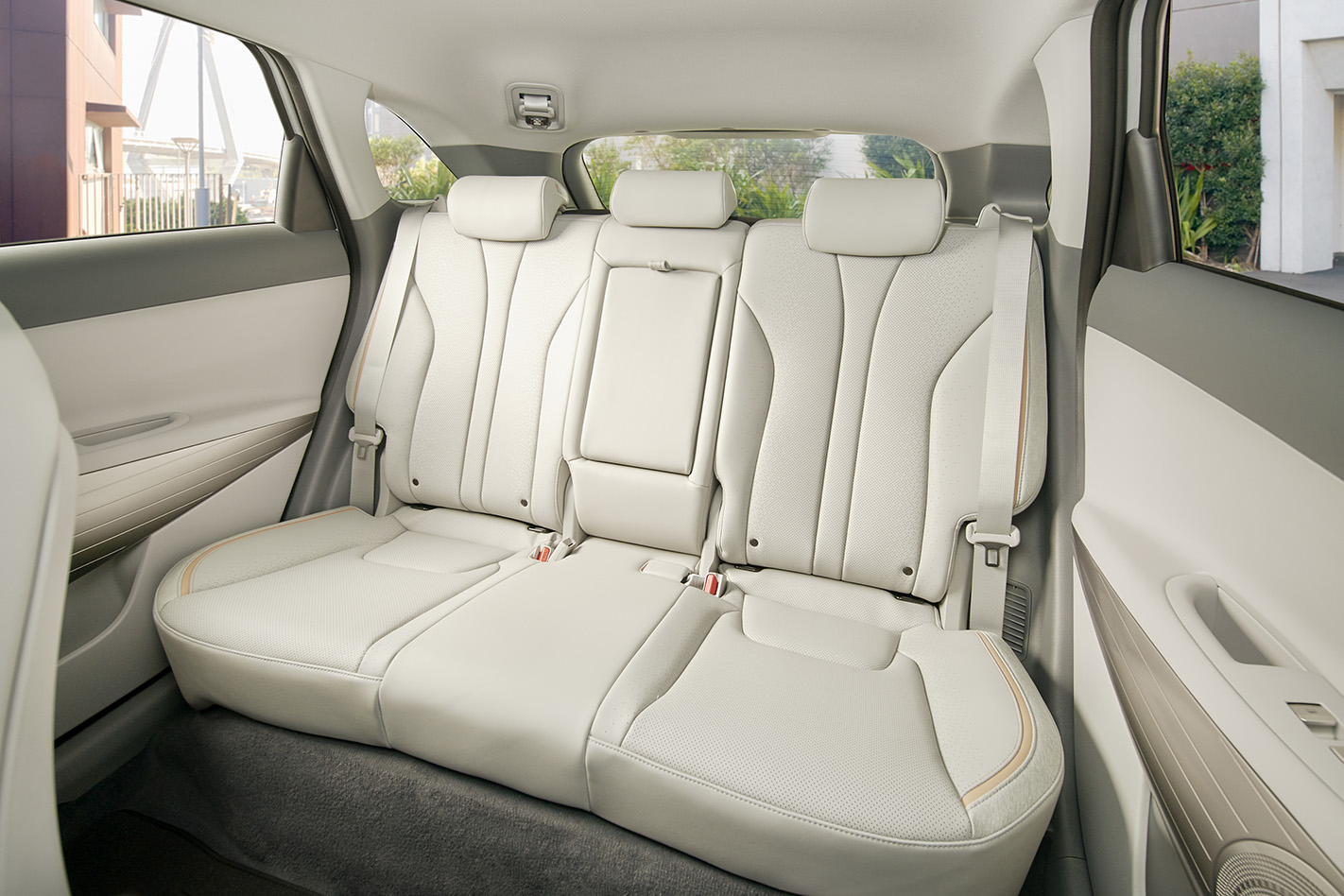
The rear seatbacks recline about 20 per cent and there’s good headroom despite the sweptback roofline.
There is seat heating for the outboard seats, air vents behind the centre console and a 12-volt socket, though there are no USB ports back there.
Behind the back seats is a 461-litre boot, which is a little tight for a medium SUV. The space itself is long and wide but rather shallow because of the three carbon-fibre hydrogen tanks, each about the size of a beer keg, taking up all the space below.
This also means there is no space for a spare wheel, though there is a tyre repair kit.
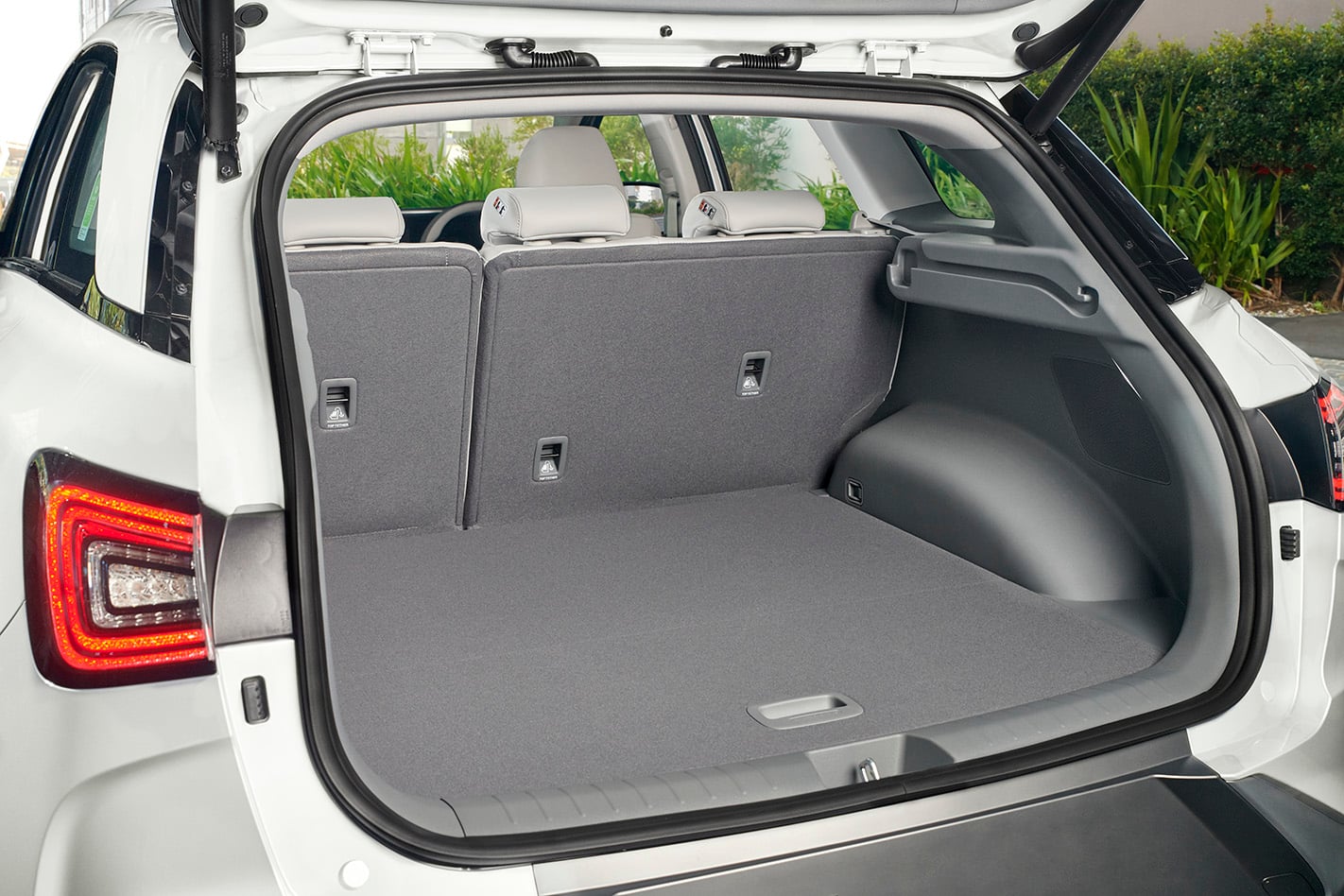
On the road, the Nexo is a very quiet car. Of course, there is no engine sound and wind noise is well-contained even around the mirrors. Tyre roar can be loud on coarser surfaces but that could be because it’s more noticeable due to everything else being so quiet.
What is the Hyundai Nexo like to drive?
What’s remarkable about the Nexo FCEV is how unremarkable it feels to drive compared to an ICE SUV.
The 120kW/395Nm motor, which drives the front wheels, has similar output to a four-cylinder turbo engine and performs accordingly. It doesn’t have that head jerking instant take-off like a BEV, but it does take off instantly thanks to the additional 15kW mild-hybrid battery boost.
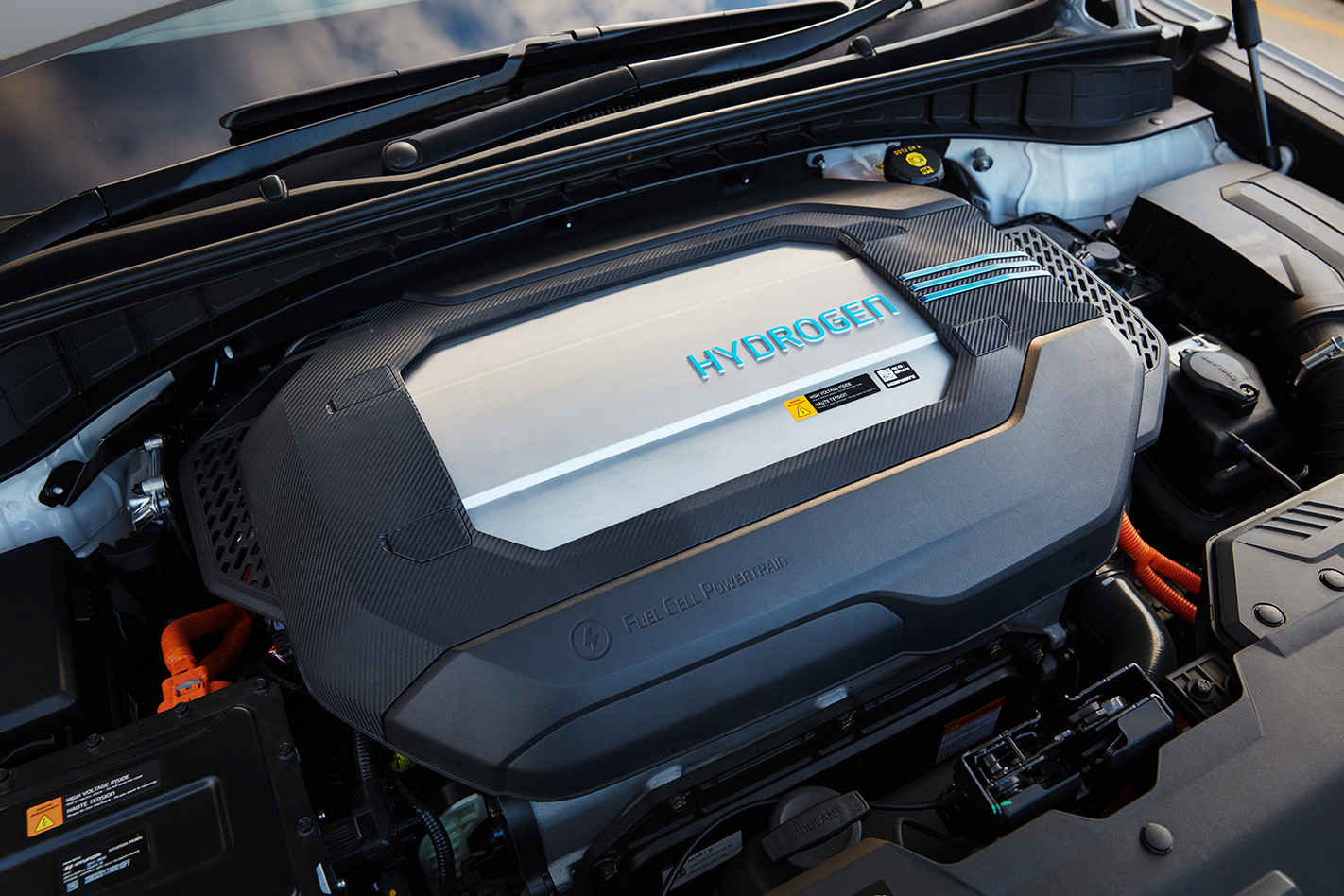
It has two drive modes, Eco and Normal. Normal mode brings a very SUV-like 0-100km/h acceleration of 9.54 seconds on its way to a top speed of 179km/h. But it does it effortlessly and there’s plenty of power in reserve for when you need it, such as when overtaking – much like a turbo engine.
The Nexo’s ride and handling are excellent for an SUV. It has a decent-sized footprint on the road, with a 2790mm wheelbase and 1614mm/1625mm front and rear wheel tracks, making it feel well planted.
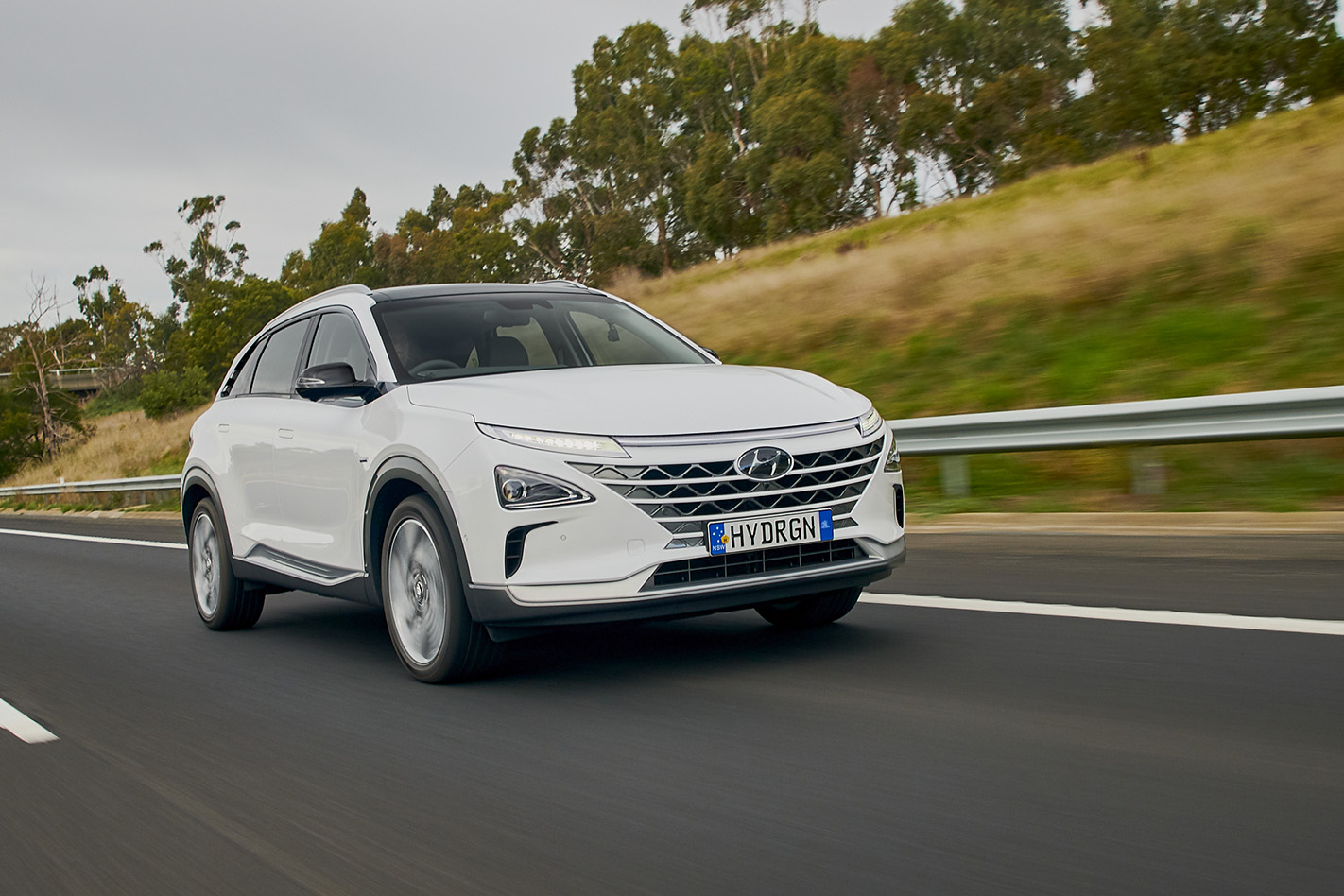
Despite having a fuel-cell under the bonnet and heavy hydrogen tanks over the rear wheels, the weight distribution doesn’t feel any different to an ICE SUV so the front end acts just as you’d expect to. It handles nicely, with body roll well contained around bends and there is good rear-end compliance.
Like most Hyundai models available here, the Nexo has undergone an extensive tuning program for local conditions and, riding on its 19-inch Hankook Ventus S1 SUV tyres, it seems to glide over smoother roads while on rougher surfaces its multi-link rear suspension absorbs most road imperfections with minimal secondary movement.
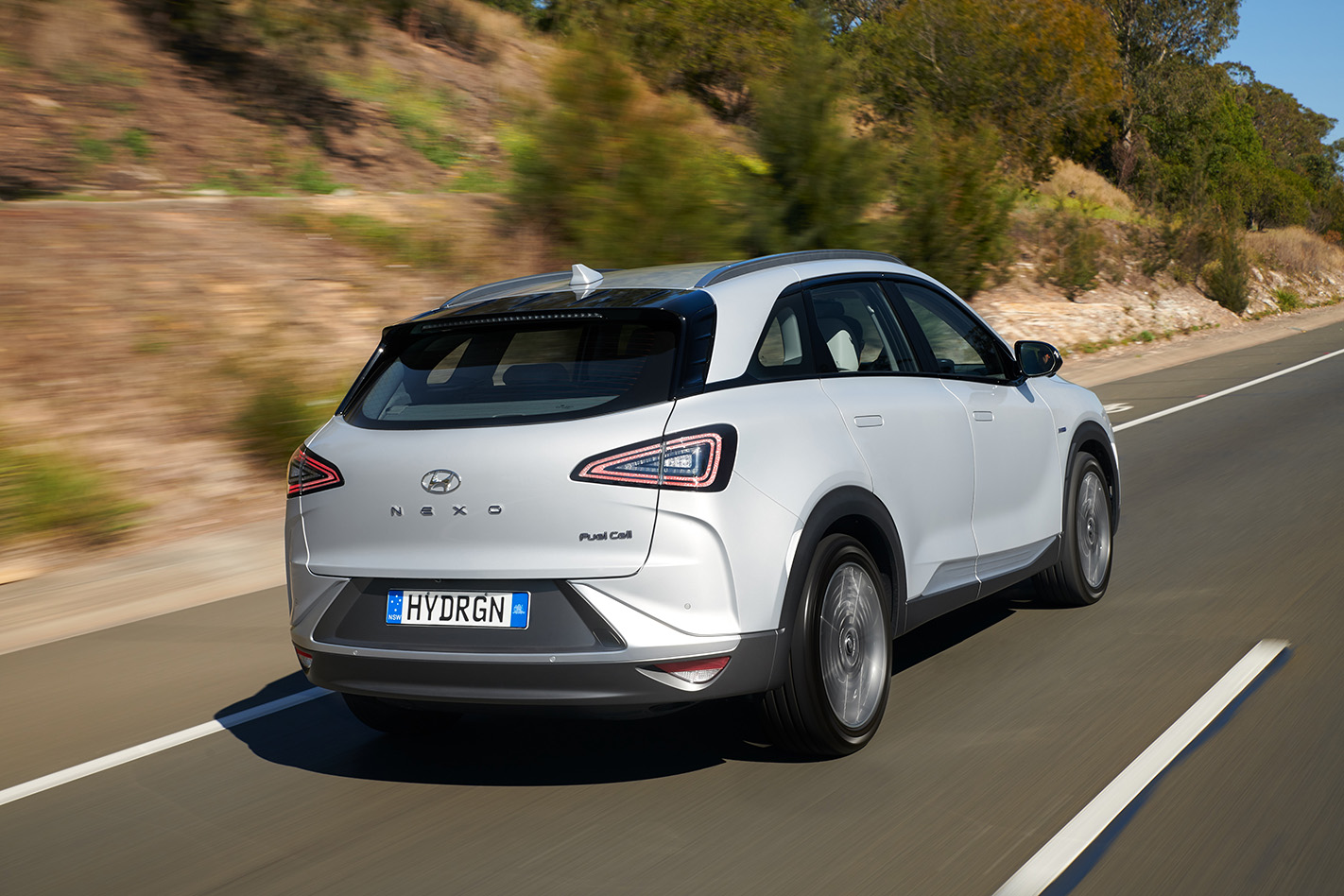
The power steering, with column-mounted motor, feels nicely weighted and direct.
Apart from the relative silence, one way to tell the Nexo drives under electric power is its regenerative braking which, like the Hyundai Kona Electric, can be set from to three different levels using paddle shifters on the steering wheel. If you prefer to drive without it, the Nexo has good stopping power with disc brakes all round including 320mm ventilated rotors at the front.
This is an enjoyable and comfortable vehicle to drive and you should have no issues staying in the saddle for all of its 666km range, bladder permitting.
What is the Hyundai Nexo like for safety?
The Nexo comes with Hyundai’s ‘SmartSense’ active safety suite, including autonomous emergency braking, driver attention warning, a radar-based blind-spot collision avoidance assist system, lane-keeping assist, lane-departure warning, rear cross-traffic collision-avoidance assist, and adaptive cruise control with ‘Stop & Go’.
The lane-departure-warning can be pretty irritating in narrow roads, but there is a button to the right of the steering wheel to turn it off.
The Nexo has good all-round vision which helps with parking and negotiating tight spots, but there are some handy aids should you require additional help. These include a 360-degree parking monitor to help avoid hidden obstacles such as bollards.
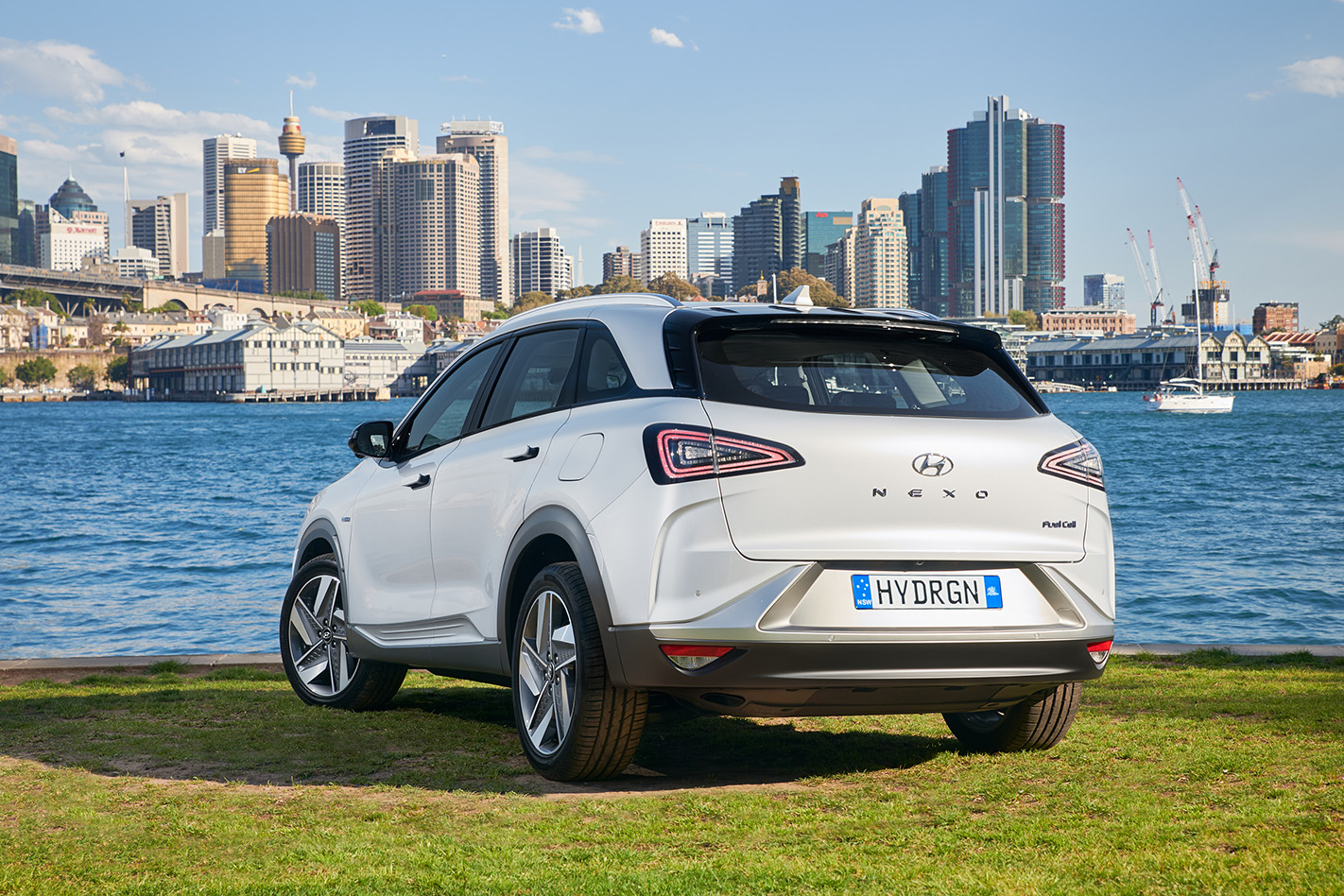
And if you need to park in a particularly tight spot, the Nexo also comes with a remote smart parking assist system that uses ultrasonic sensors, allowing it to be moved in and out of parking spaces from outside the vehicle via controls on the key.
Passive safety includes six airbags including front and side inflators for the driver and front passenger and front and rear side curtains; roll-over sensor, ISOFIX child-seat anchors for the rear outboard seats and three rear top tethers.
The Nexo has a five-star ANCAP safety rating based on its 2018 Euro-NCAP testing that saw it score very well in most categories including 95 per cent for adult occupant protection and 89 per cent for child occupant protection.
The Verdict
Unless you live in Canberra you won’t be seeing too many Hyundai Nexos on the roads for a while due to the fact there are currently so few places to refuel them.
That’s a shame because this really is an excellent SUV and a great showcase for the benefits of emissions-free hydrogen propulsion, not least convenience.
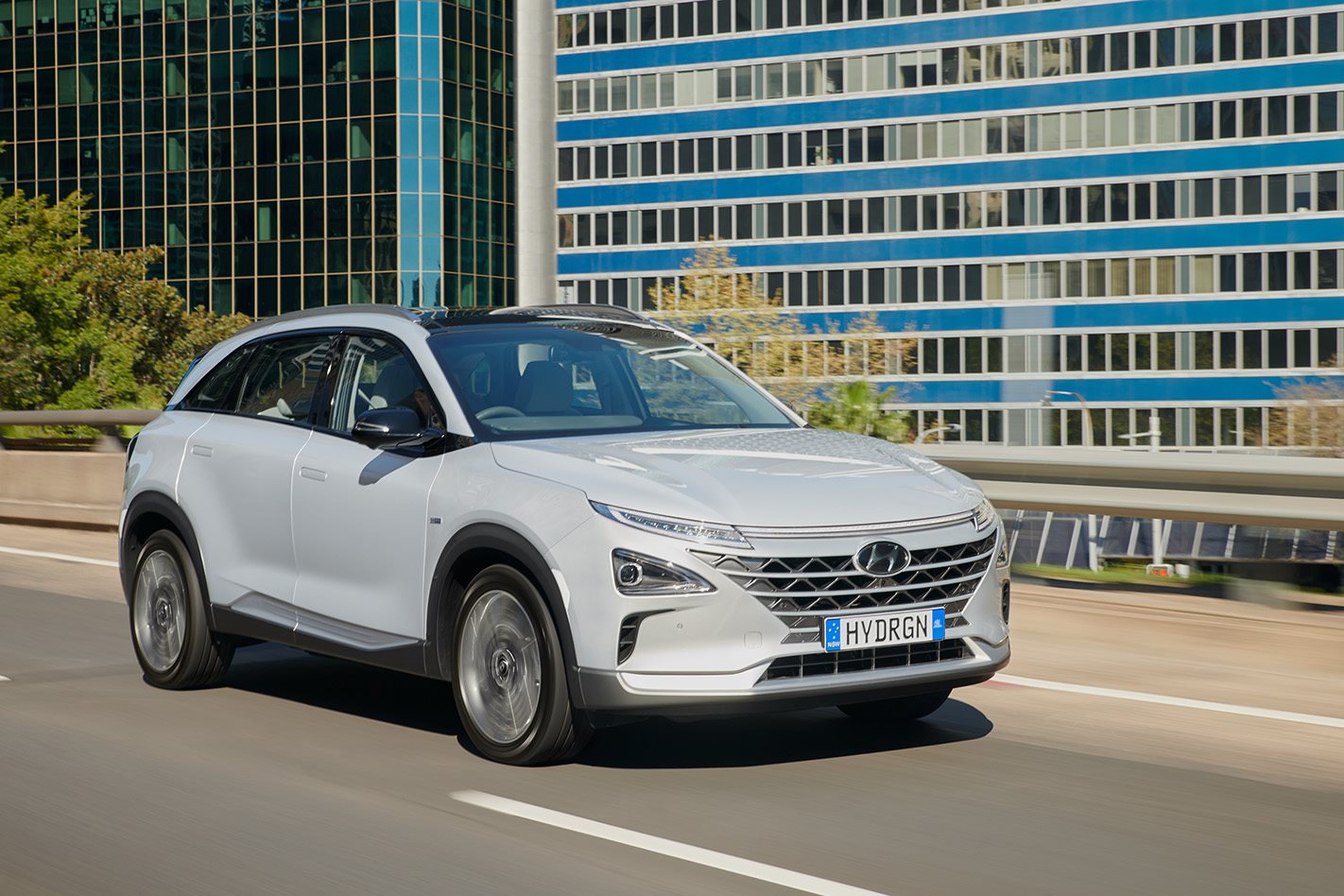
That said this is no prototype – the Nexo one of the most polished Hyundai vehicles I’ve driven and is the result of 20 years of research by Korean carmaker, much of it carried out in Australia, with all the hard work done by its ix35 Fuel Cell predecessor. Apart from the scarcity of hydrogen filling stations and a slightly small boot, it seems to present few compromises compared to ICE or BEV vehicles.
The good news is that even the EV-phobic federal government is seriously looking at green hydrogen as a future fuel for a range of applications including mining and public transport, a byproduct of which will be cheaper vehicles and the proliferation of refuelling stations.
Here’s hoping this will occur in the first-generation Nexo’s lifetime and it, and the second-generation Toyota Mirai, are the first of many FCEVs to hit Australian roads in private hands.
RATING 8.5/10
PLUS Emissions-free driving, cabin space and comfort, ride and handling MINUS Hydrogen scarcity, small boot space, you can’t actually own a Nexo
2021 Hyundai Nexo FCEV specifications
Body: 5-door, 5-seat medium SUV Drive: FWD Motor: Permanent magnet synchronous motor Combined Power: 135kW Torque: 395Nm Battery Lithium-ion Polymer Fuel (hydrogen) consumption: 0.95kg/100km (combined) Weight: 1814kg Power/weight: 64w/kg Transmission: Single-speed reduction gear Suspension: MacPherson strut/multi-link L/W/H: 4670/1860/1640mm Wheelbase: 2790mm Tracks F/R: 1614/1625mm Brakes: Front ventilated/rear solid discs with regenerative braking Tyres: 245/45 R19 98W Hankook Ventus S1 evo2 SUV Wheels: Alloy 19-inch 7J +48 Price: POA (lease only)


